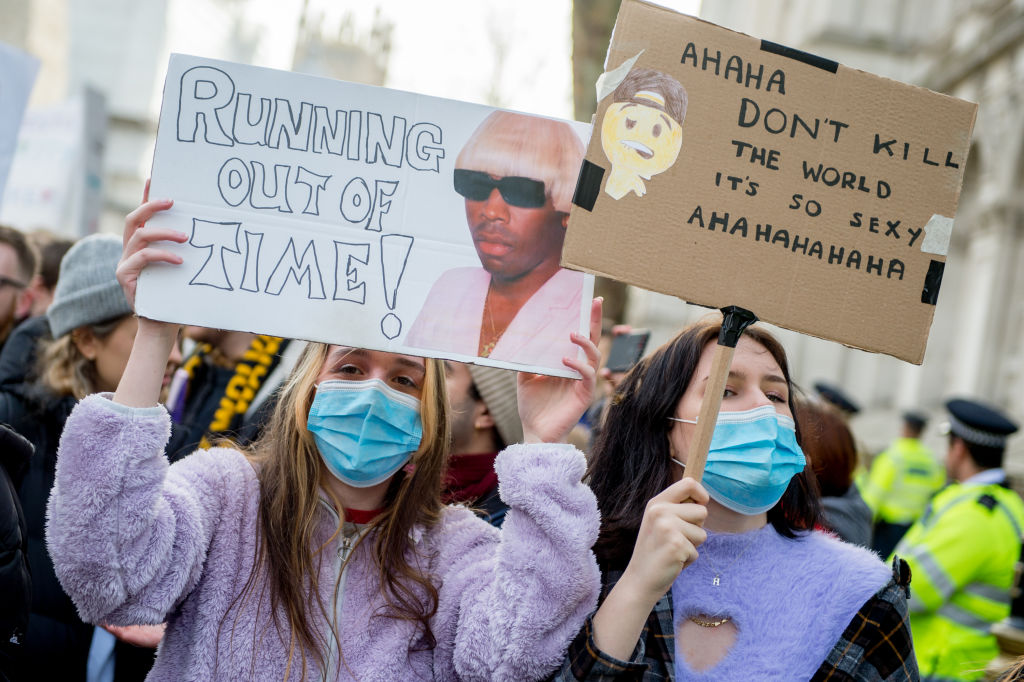
Every child on Earth faces an uncertain future due to the effects of climate change and not one country is doing enough to ensure its children’s sustained wellbeing, a new report says.
The findings, compiled by over 40 child and adolescent health experts in a commission convened by the World Health Organization (WHO), UNICEF and the medical journal The Lancet, show that the health and future for every child and teen in the world is under threat. Climate change, ecological degradation and advertising practices that push harmful products toward youth are just some factors that have created an uncertain future for children, the report says.
“Despite improvements in child and adolescent health over the past 20 years, progress has stalled, and is set to reverse,” said Helen Clark, co-chair of the Commission and the former Prime Minister of New Zealand, in a UNICEF statement about the report. “It has been estimated that around 250 million children under five years old in low- and middle-income countries are at risk of not reaching their developmental potential, based on proxy measures of stunting and poverty. But of even greater concern, every child worldwide now faces existential threats from climate change and commercial pressures.”
In the short term, survival rates for children are among the highest they’ve been in history, Stefan Peterson, chief of health at UNICEF and one of the study’s authors, tells TIME. But, he says, rampant inequality and marketing practices have threatened the future of overall developments in nutrition and survival.
“The gains are not shared equally within countries and between the countries of the world,” he says, adding that children are increasingly exposed to marketing tactics for unhealthy foods, drugs and gambling — products that are harmful to health and further drive climate change. “It’s threatening children, and by extension, humanity.”
The report includes an index of 180 countries that compares findings on three measures of child wellbeing: flourishing, sustainability and equity. These three categories include factors like health, education, nutrition, sustainability, greenhouse gas emissions, and income gaps.
“The poorest countries have a long way to go towards supporting their children’s ability to live healthy lives, but wealthier countries threaten the future of all children through carbon pollution, on course to cause runaway climate change and environmental disaster,” the authors write in the report. “Not a single country performed well on all three measures of child flourishing, sustainability, and equity.”
The study ranked Norway, South Korea and the Netherlands as the highest based on these factors. Chad, Somalia, Niger, Mali and the Central African Republic ranked the lowest.
But when the study authors took into account the per capita carbon emissions of the countries and compared it with performance on child flourishing, the countries where children face the some of the worst odds emit less carbon than countries where children have a higher chance of surviving and flourishing. The United States, Australia, Saudi Arabia are among the 10 worst carbon emitters globally. The current level of carbon emissions is pushing the world closer to dangerous levels of climate change.
“There’s a huge global inequity here in that children who benefit least from carbon emissions are the ones paying the biggest price in other parts of the world,” Peterson says.
Peterson and the dozens of other health professionals that worked on the report recommend reframing societal priorities to put children at the center of new policies. This includes a significant financial investment to ensure their health. Beyond monetary investments in healthcare, the authors urge people across all sectors, from housing to energy to transport, to work together to ensure future survival. They also encourage taking children’s voices into account. “Citizen participation and community action, including the voices of children themselves, are powerful forces for change that must be mobilized to reach the [Sustainable Development Goals],” they write.
More Must-Reads from TIME
- Cybersecurity Experts Are Sounding the Alarm on DOGE
- Meet the 2025 Women of the Year
- The Harsh Truth About Disability Inclusion
- Why Do More Young Adults Have Cancer?
- Colman Domingo Leads With Radical Love
- How to Get Better at Doing Things Alone
- Michelle Zauner Stares Down the Darkness
Write to Mahita Gajanan at mahita.gajanan@time.com